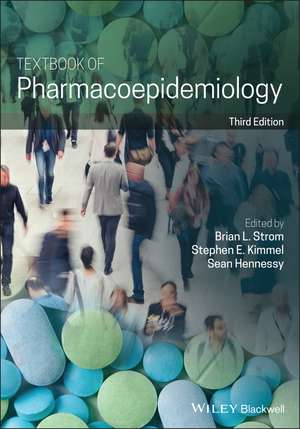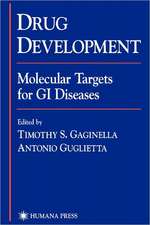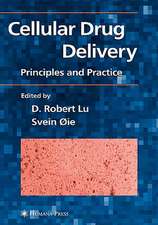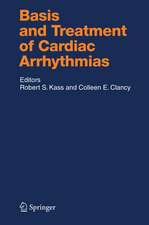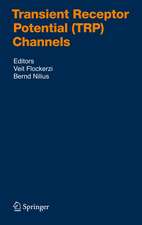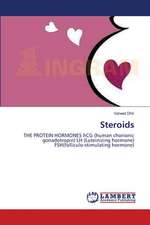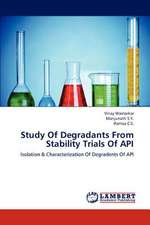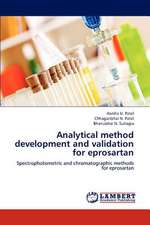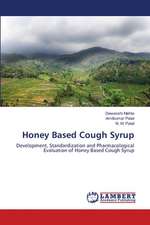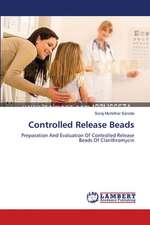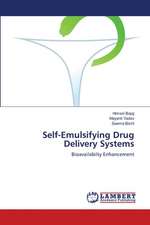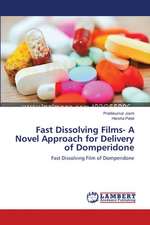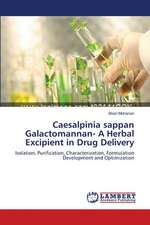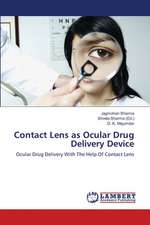Notă biografică
About the Editors Brian L. Strom is Chancellor, Rutgers Biomedical and Health Sciences, University Professor, and Executive Vice President for Health Affairs, Rutgers University, Newark, NJ, USA. Stephen E. Kimmel is Dean's Professor and Chair of Epidemiology, College of Public Health and Health Professions and College of Medicine, University of Florida, Gainesville, FL, USA. Sean Hennessy is Professor of Epidemiology and Director of the Center for Pharmacoepidemiology Research and Training, University of Pennsylvania Perelman School of Medicine, Philadelphia, PA, USA.
Cuprins
Contributors xvii
Preface xxi
Acknowledgements xxv
Part I Introduction to Pharmacoepidemiology 1
1 What is Pharmacoepidemiology? 3
Brian L. Strom
Introduction 3
Definition of Pharmacoepidemiology 3
Historical Background 5
The Current Drug Approval Process 13
Potential Contributions of Pharmacoepidemiology 15
Key Points 18
Further Reading 18
2 Study Designs Available for Pharmacoepidemiologic Studies 20
Brian L. Strom
Introduction 20
Overview of the Scientific Method 20
Types of Errors that one Can Make in Performing a Study 22
Criteria for the Causal Nature of an Association 23
Epidemiologic Study Designs 26
Discussion 31
Conclusion 32
Key Points 32
Further Reading 33
3 Sample Size Considerations for Pharmacoepidemiologic Studies 35
Brian L. Strom
Introduction 35
Sample Size Calculations for Cohort Studies 35
Sample Size Calculations for Case-Control Studies 40
Sample Size Calculations for Case Series 41
Discussion 43
Key Points 45
Further Reading 45
4 Basic Principles of Clinical Pharmacology Relevant to Pharmacoepidemiologic Studies 47
Jeffrey S. Barrett
Introduction 47
Clinical Pharmacology and Pharmacoepidemiology 48
Basics of Clinical Pharmacology 48
Pharmacokinetics 49
Special Populations 52
Pharmacodynamics 56
Pharmacogenomics 59
Model-Informed
Drug Development 59
Conclusion 60
Key Points 60
Further Reading 61
5 When Should One Perform Pharmacoepidemiologic Studies? 62
Brian L. Strom
Introduction 62
Reasons to Perform Pharmacoepidemiologic Studies 62
Safety Versus Risk 67
Risk Tolerance 67
Conclusion 70
Key Points 70
Further Reading 71
6 Views from Academia, Industry, Regulatory Agencies, and the Legal System 73
Joshua J. Gagne, Jerry Avorn, Nicolle M. Gatto, Jingping Mo, Gerald J. Dal Pan, June Raine, Shinobu Uzu, Aaron S. Kesselheim, and Kerstin N. Vokinger
The View from Academia 73
The View from Industry 81
The View from Regulatory Agencies 90
The View from the Legal System 98
Further Reading 107
Part II Sources of Pharmacoepidemiology Data 113
7 Postmarketing Spontaneous Pharmacovigilance Reporting Systems 115
Gerald J. Dal Pan, Marie Lindquist, and Kate Gelperin
Introduction 115
Description 116
Strengths 128
Limitations 129
Particular Applications 131
The Future 132
Key Points 132
Further Reading 134
8 Overview of Electronic Databases in Pharmacoepidemiology 136
Brian L. Strom
Introduction 136
Description 137
Strengths 138
Weaknesses 139
Particular Applications 140
The Future 140
Key Points 141
Further Reading 141
9 Encounter Databases 142
Tobias Gerhard, Yola Moride, Anton Pottegård, and Nicole Pratt
Introduction 142
Description 142
Strengths 161
Limitations 162
Particular Applications 163
The Future 166
Key Points 167
Further Reading 171
US Databases 172
European Databases 172
Canadian Databases 173
Asian Databases 173
10 Electronic Health Record Databases 174
Daniel B. Horton, Harshvinder Bhullar, Francesca Cunningham, Janet Sultana, and Gialuca Trifirò
Introduction 174
Description 174
Strengths 184
Limitations 185
The Future 186
Summary Points for Electronic Health Record Databases 187
Acknowledgment 187
Further Readings 189
11 Primary Data Collection for Pharmacoepidemiology 192
Priscilla Velentgas
Introduction 192
Methods of Primary Data Collection 195
Strengths 197
Limitations 197
Particular Applications 198
Conclusions 199
Key Points 199
Further Reading 201
12 How Should One Perform Pharmacoepidemiologic Studies? Choosing Among the Available Alternatives 203
Brian L. Strom
Introduction 203
Choosing Among the Available Approaches to Pharmacoepidemiologic Studies 203
Examples 215
Conclusion 216
Key Points 216
Further Reading 216
Part III Special Issues in Pharmacoepidemiology Methodology 219
13 Validity of Drug and Diagnosis Data in Pharmacoepidemiology 221
Mary Elizabeth Ritchey, Suzanne L. West, and George Maldonado
Introduction 221
Clinical Problems to be Addressed by Pharmacoepidemiologic Research 221
Methodological Problems to be Solved by Pharmacoepidemiologic Research 222
Currently Available Solutions 233
The Future 242
Key Points 242
Further Reading 243
14 Assessing Causality from Case Reports 246
Bernard Bégaud and Judith K. Jones
Introduction 246
Clinical Problems to be Addressed by Pharmacoepidemiologic Research 246
The Two Paradigms of Causality Assessment 246
When is Assessing Causation from Cases Reports Useful? 247
Methodological Problems to be Addressed by Pharmacoepidemiologic Research 248
Approaches for Assessing Causation from Individual Cases 249
Calibration 253
Choosing the Appropriate Approach 253
The Future 254
Key Points 255
Further Reading 255
15 Molecular Pharmacoepidemiology 257
Christine Y. Lu and Stephen E. Kimmel
Introduction 257
Definitions and Concepts 258
The Interface of Pharmacogenetics and Pharmacogenomics with Molecular
Pharmacoepidemiology 259
Clinical Problems to be Addressed by Pharmacoepidemiologic Research 260
The Progression and Clinical Application of Molecular Pharmacoepidemiology 264
Methodological Problems to be Addressed by Pharmacoepidemiologic Research 264
Currently Available Solutions 269
The Future 271
Key Points 273
Further Reading 274
16 Bioethical Issues in Pharmacoepidemiologic Research 276
Laura E. Bothwell, Annika Richterich, and Jeremy Greene
Introduction 276
Clinical Problems to be Addressed by Pharmacoepidemiologic Research 276
Methodologic Problems to be Solved by Pharmacoepidemiologic Research 283
Currently Available Solutions 286
The Future 289
Acknowledgement 291
Key Points 291
Further Reading 293
17 The Use of Randomized Controlled Trials for Pharmacoepidemiology 294
Samuel M. Lesko, Allen A. Mitchell, and Robert F. Reynolds
Introduction 294
Clinical Problems to be Addressed by Pharmacoepidemiologic Research 294
Methodological Problems to be Solved by Pharmacoepidemiologic Research 296
Currently Available Solutions 298
Large Simple Trials 298
Analysis 303
Primary Analysis 303
The Future 304
Key Points 305
Further Reading 305
18 Pharmacoeconomics: Economic Evaluation of Pharmaceuticals 307
Kevin A. Schulman
Introduction 307
Clinical Problems to be Addressed by Pharmacoeconomic Research 307
Methodological Problems to be Addressed by Pharmacoeconomic Research 312
The Future 320
Acknowledgements 320
Key Points 320
Further Reading 320
19 Patient Engagement and Patient Reported Outcomes 322
Esi M. Morgan and Adam C. Carle
Introduction 322
Patient Reported Outcomes in Clinical Trials 323
Patient Reported Outcomes in Routine Care 323
Patient Reported Outcomes as Motivation to Develop New Therapeutic Strategies 325
Clinical Problems to be Addressed by Pharmacoepidemiologic Research 326
Methodologic Problems to be Solved by Pharmacoepidemiologic Research 328
Currently Available Solutions 328
The Future 330
Key Points 331
Further Reading 331
20 The Use of Meta-analysis in Pharmacoepidemiology 334
Brenda J. Crowe, Stephen J.W. Evans, H. Amy Xia, and Jesse A. Berlin
Introduction 334
Clinical Problems to be Addressed by Pharmacoepidemiologic Research 335
Methodological Problems to be Solved by Pharmacoepidemiologic Research 336
Currently Available Solutions 338
The Future 350
Key Points 351
Further Reading 352
21 Studies of Medication Adherence 355
Julie Lauffenburger, Trisha Acri, and Robert Gross
Introduction 355
Clinical Problems to be Addressed by Pharmacoepidemiologic Research 356
Methodological Problems to be Addressed by Pharmacoepidemiologic Research 357
Currently Available Solutions 357
Analysis Issues in Adherence 362
Use of Adherence Data in Clinical Trials and Comparative Effectiveness Studies 362
The Future 365
Key Points 365
Further Reading 366
22 Advanced Approaches to Controlling Confounding in Pharmacoepidemiologic Studies 368
Sebastian Schneeweiss and Samy Suissa
Introduction 368
Clinical Problems to be Addressed by Pharmacoepidemiologic Research 368
Methodological Problems to be Addressed by Pharmacoepidemiologic Research 368
Currently Available Solutions 370
Conclusion 382
Key Points 382
Further Reading 384
Part IV Special Applications and the Future of Pharmacoepidemiology 387
23 Special Applications of Pharmacoepidemiology 389
David Lee, Björn Wettermark, Christine Y. Lu, Stephen B. Soumerai, Robert T. Chen, Sharon-Lise T.Normand, Art Sedrakyan, Danica Marinac-Dabic, Daniel B. Horton, Sonia Hernandez-Diaz, Tamar Lasky, Krista F. Huybrechts, Claudia Manzo, Emil Cochino, Hanna M. Seidling, David W. Bates, Bennett Levitan, Rachael L. DiSantostefano, and Scott Evans
Studies of Drug Utilization 389
Introduction 389
Evaluating and Improving Prescribing 398
Special Methodological Issues in Pharmacoepidemiologic Studies of Vaccine Safety 403
Epidemiologic Studies of Implantable Medical Devices 408
Research on the Effects of Medications in Pregnancy and in Children 418
Risk Management 427
The Pharmacoepidemiology of Medication Errors 436
Benefit-Risk Assessments of Medical Treatments 442
Further Reading 454
24 The Future of Pharmacoepidemiology 464
Brian L. Strom, Stephen E. Kimmel, and Sean Hennessy
Introduction 464
The View from Academia 465
Scientific Developments 465
The View from Industry 471
The View from Regulatory Agencies 472
The View from the Law 473
Conclusion 473
Key Points 473
Further Reading 474
Appendix A -- Sample Size Tables 475
Appendix B -- Glossary 493
Index 505
